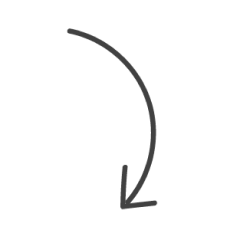Force
Force is a push or a pull that causes an object to move or change direction. A force happens when one object interacts with another. An object cannot move unless a force acts on it.
Newton’s laws (strength and motion)
Newton’s three laws of motion describe the relationship between an object's motion (movement) and the forces acting on it.
An object will not change its motion unless a force acts on it. For example, a leaf on the ground will not move until a breeze blows it.
This law is about strength and size. The speed at which the object moves depends on the size of the object and the amount of force applied. For example, if you kick a soccer ball softly, it will not roll very far. But if you forcefully kick it, the ball will go further.
For every action there is an equal and opposite reaction. For example, if you jump into water, you will go down into the pool, and the water will splash up.
Push/pull
A push is when you move an object away from you, while a pull is when you move an object towards you.
Direction
An object in motion will stay moving in the same direction unless it encounters another force. For example, a ball will keep rolling straight, unless it hits a wall and bounces off it, causing a change in direction.
Transfer of energy
When objects collide, energy can be transferred from one object to another, which causes the object’s motion to change.
Patterns of motion
Motion happens when something moves or is moved. When the movement occurs repeatedly in the same way, it is a pattern of motion. Observing these patterns can help us predict (or guess) how an object will move in the future.
Design
Students need to tap into their creativity and imagination to design and build solutions for real-world problems. Designing is a cross-curricular process where students draw on knowledge from math, science, engineering, computing, and art. By repeatedly engaging in the design process, students will become resourceful, innovative, and capable individuals who understand how design and technology shape our lives and the world.
Annotated sketches
Students can develop and refine their ideas visually with annotated sketches. The sketch itself shows the form and the overall idea of the “what,” while the annotations help explain student thinking to the viewer. These annotations help explain the “why” and “how,” e.g., the functions of different parts or how something solves a problem.



